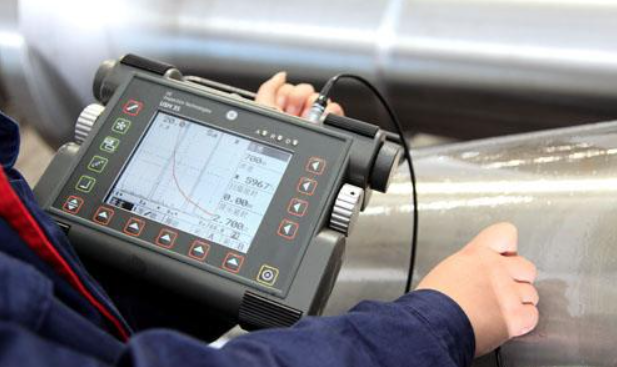Ultrasonic testing is a commonly used method for detecting internal surface defects in cylindrical forgings. In order to ensure effective testing results, there are some important precautions that need to be followed.
Firstly, ultrasonic testing should be performed on cylindrical forgings after final austenitizing treatment and tempering heat treatment to obtain the mechanical properties of the forgings. Of course, as needed, testing can also be performed before or after any subsequent stress relieving heat treatment.
Secondly, when conducting ultrasonic testing, a radial incidence ultrasonic beam should be used for comprehensive scanning. This means that ultrasonic waves should be incident perpendicular to the inner surface from the probe to ensure detection of the entire inner surface. Meanwhile, in order to improve the accuracy of detection, there should be at least 20% overlap of the probe chip width between adjacent scans.
In addition, forgings can be in a stationary state or inspected by placing them on a lathe or roller for rotation. This ensures that the entire inner surface receives sufficient detection coverage.
During the specific inspection process, attention should be paid to the smoothness and cleanliness of the inner surface of the forging. The surface should not have scratches, loose oxide skin, debris, or other foreign objects to prevent interference with the propagation and reception of ultrasonic waves. To achieve this, it is necessary to use a coupling agent to tightly connect the probe to the inner surface of the forging to ensure effective ultrasonic transmission.
In terms of equipment, ultrasonic testing equipment includes ultrasonic testing equipment, probes, coupling agents, and test blocks. These tools are key to ensuring the accuracy and reliability of the testing process.
Finally, when conducting ultrasonic testing, the acceptance of forgings can be judged based on the number of defects, defect amplitude, position, or a combination of the three, as required. Meanwhile, due to the presence of rounded corners and other local shape reasons at the step of cylindrical forgings, it is not necessary to inspect certain small parts of the inner hole surface.
In summary, ultrasonic testing is a reliable method for detecting internal surface defects in cylindrical forgings. Following the above precautions, combined with appropriate equipment and technology, can ensure the quality and reliability of forgings and meet corresponding testing requirements.
Post time: Oct-08-2023





